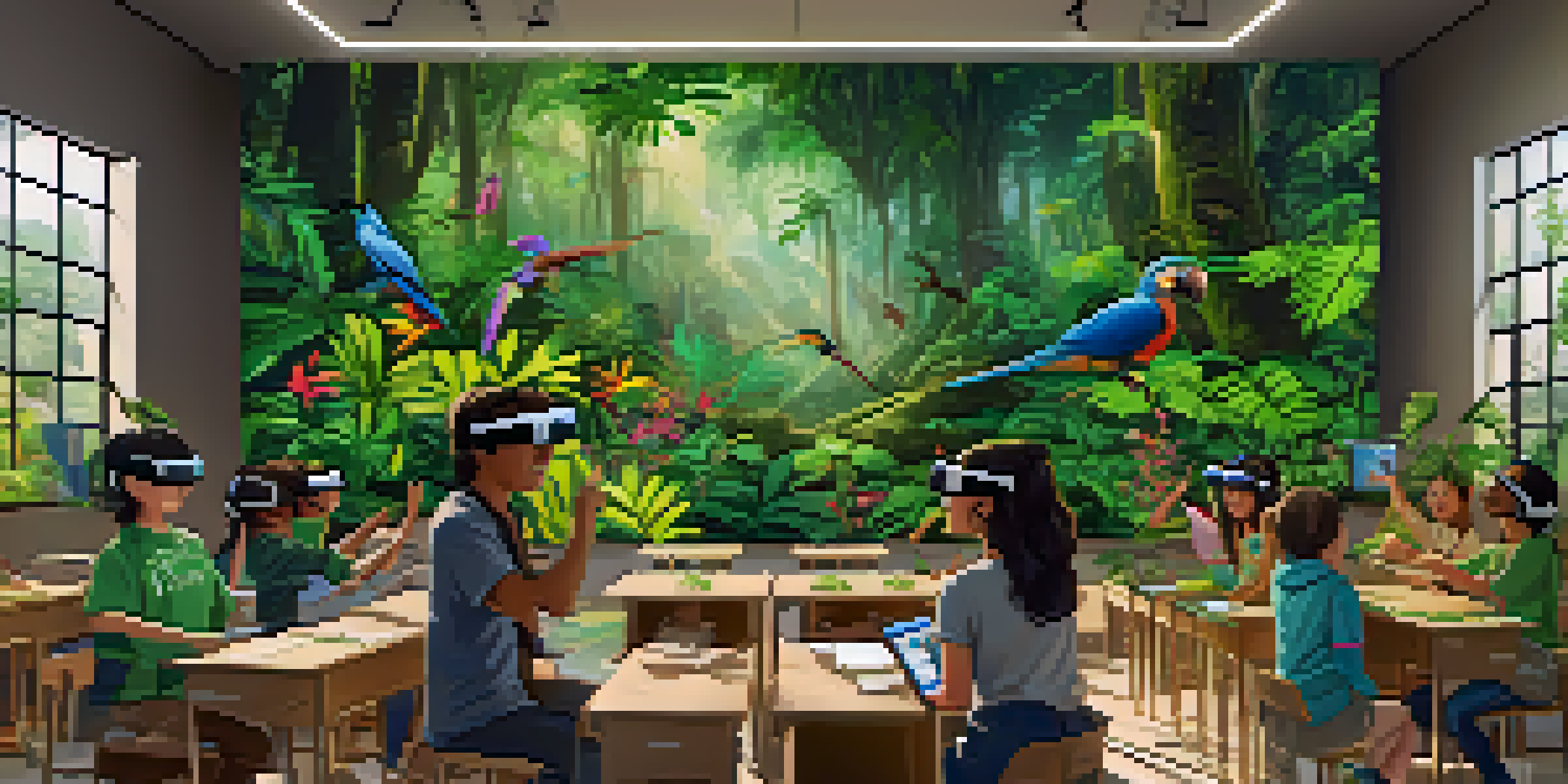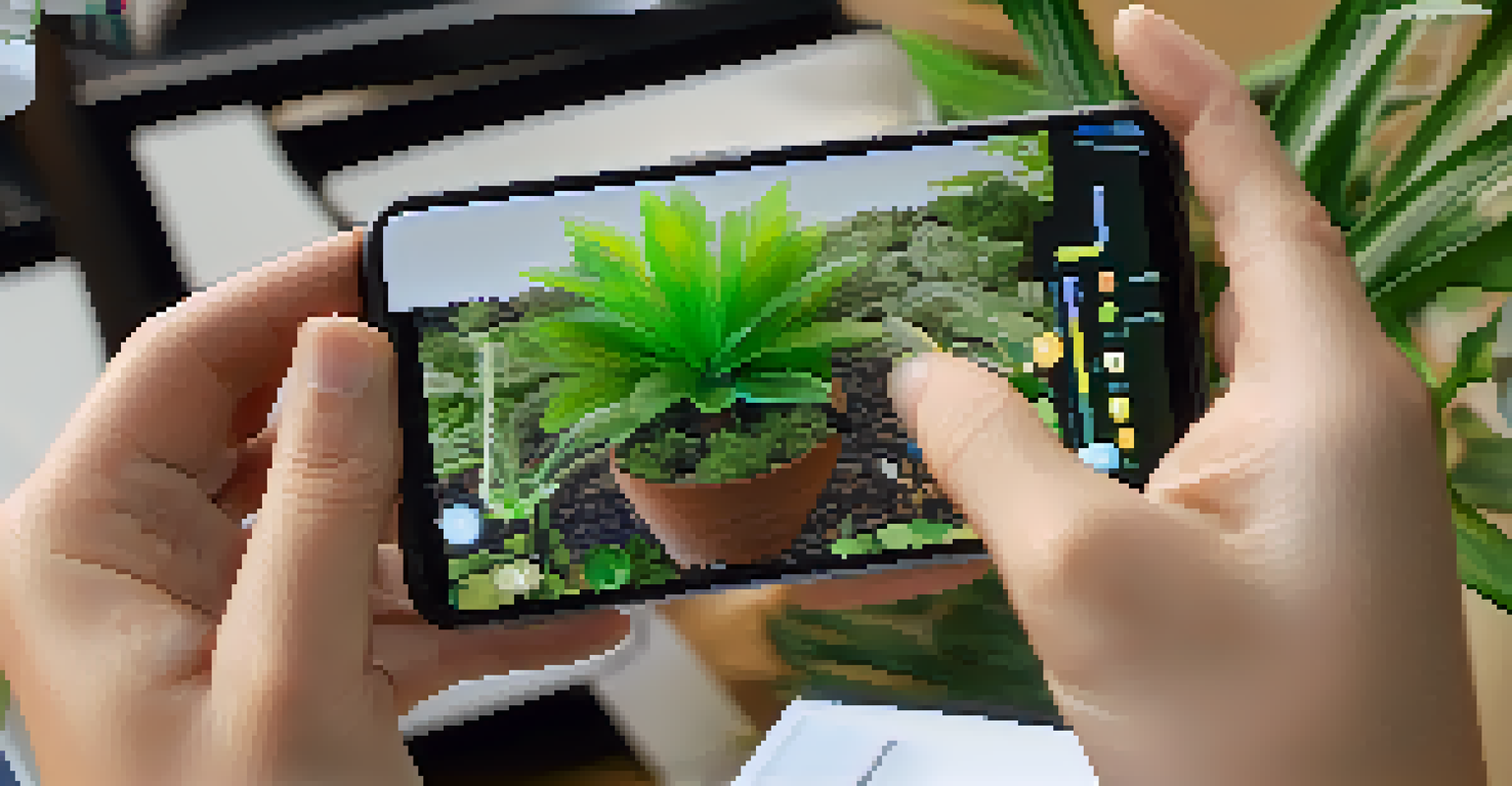Using Technology to Enhance Plant-Centric Learning

The Role of Technology in Modern Education
In today's learning environment, technology plays a pivotal role in shaping how students engage with various subjects. From interactive apps to multimedia resources, these tools have the power to enhance understanding and retention of knowledge. Especially in plant-centric learning, technology can bridge the gap between theories and real-world applications, making the material more accessible and engaging.
Technology is best when it brings people together.
For instance, virtual reality (VR) allows students to explore diverse ecosystems without leaving the classroom. Imagine stepping into a tropical rainforest or a desert biome through a VR headset, getting a close-up view of flora and fauna. Such immersive experiences not only spark curiosity but also deepen knowledge retention by making learning more experiential.
Moreover, technology can facilitate collaborative learning, where students connect with peers globally to share insights about plant biology. This interconnectedness broadens perspectives and nurtures a sense of community among learners, creating a richer educational experience.
Interactive Apps for Plant Exploration
Interactive apps have revolutionized how students learn about plants, offering a hands-on approach to education. These apps often include features like plant identification, growth tracking, and care tips, making them perfect companions for budding botanists. For example, apps like PlantSnap allow users to identify plants simply by taking a picture, turning every walk in the park into a mini field trip.

Beyond identification, these apps often provide information on the ecological roles and benefits of various plant species. Such knowledge not only enhances students' appreciation for nature but also encourages responsible environmental stewardship. When students learn about the importance of a plant species in its ecosystem, they become more invested in conservation efforts.
Technology Enhances Learning Engagement
Modern tools like VR and AR make plant education more interactive and immersive.
Additionally, many apps offer gamification elements, turning learning into a fun challenge. Students can earn badges or rewards for completing tasks like identifying different plants or learning about their habitats, which fosters a sense of accomplishment and motivates further exploration.
Using Online Resources for Research and Learning
The internet is a treasure trove of information, especially for those passionate about plants. Online databases, articles, and video tutorials provide students with a wealth of resources at their fingertips. By utilizing platforms like YouTube or educational websites, learners can dive deeper into specific topics, such as plant anatomy or photosynthesis.
Education is not the filling of a pail, but the lighting of a fire.
Additionally, online forums and communities allow students to ask questions and share knowledge with fellow plant enthusiasts. This collaborative spirit not only enhances learning but also builds a supportive network where individuals can exchange ideas and experiences. Imagine a student in one part of the world discussing plant care tips with another student thousands of miles away!
Moreover, the accessibility of online resources means that students can learn at their own pace. Whether they’re revisiting a complex concept or exploring a new topic, having resources readily available empowers learners to take charge of their education.
Virtual Reality: Bringing Nature Indoors
Virtual reality (VR) technology has opened up new avenues for immersive plant-centric learning. With VR, students can explore environments that showcase diverse plant species without ever stepping outside. This technology enables them to experience different climates, terrains, and plant interactions, enriching their understanding of biodiversity.
For example, a VR experience might take students on a journey through a rainforest, allowing them to observe plant adaptations and interactions with wildlife firsthand. Such vivid experiences can ignite a passion for botany and ecology that traditional learning methods might not achieve.
Gamification Boosts Student Motivation
Incorporating game-like elements into plant learning fosters excitement and collaboration among students.
Furthermore, VR can simulate the effects of environmental changes on plant life, helping students grasp the urgency of climate change. By witnessing these impacts in a controlled setting, learners can better appreciate the importance of conservation and sustainability efforts.
Augmented Reality for Enhanced Learning Experiences
Augmented reality (AR) technology enhances the real world with digital information, making it a fantastic tool for plant-centric education. Through AR apps, students can visualize plant anatomy, growth stages, and ecosystems by simply pointing their devices at a plant or a related diagram. This interactive approach makes learning more engaging and memorable.
For instance, students can use AR to see the root systems of plants or the process of photosynthesis come to life right in front of them. This visualization helps demystify complex processes, making them easier to understand. When students can see how a plant absorbs nutrients or how sunlight fuels its growth, the learning experience becomes much more tangible.
Moreover, AR can facilitate field trips by overlaying additional information onto real-world locations. For example, while visiting a botanical garden, students could use an AR app to learn about the history and characteristics of specific plants, enriching their field trip experience.
The Benefits of Gamification in Learning About Plants
Gamification introduces game-like elements into educational content, making learning about plants exciting and engaging. By incorporating challenges, points, and rewards, educators can motivate students to delve into plant biology and ecology. For instance, a plant-themed trivia game can encourage friendly competition while reinforcing knowledge.
This approach not only makes learning fun but also promotes collaboration among students. Group activities or competitions can foster teamwork as students work together to solve problems or complete tasks related to plant science, enhancing their social skills alongside their academic knowledge.
Online Resources Support Independent Learning
The internet offers a wealth of information that empowers students to research and learn at their own pace.
Additionally, gamification can help track progress, allowing students to see their growth and areas for improvement. By providing immediate feedback through points or levels, students can stay motivated and engaged in their plant-centric learning journey.
Integrating Technology into Curriculum for Better Engagement
To maximize the benefits of technology in plant-centric learning, it's essential to integrate these tools into the curriculum effectively. Educators can design lessons that incorporate various technologies, ensuring that students gain hands-on experience with both the subject matter and the tools themselves. This integration helps students see the relevance of technology in their studies.
For example, a lesson on plant growth could involve students using sensors and data collection apps to track the growth of their classroom plants. This practical application not only reinforces theoretical knowledge but also teaches students valuable skills in data analysis and scientific inquiry.

Moreover, by blending traditional teaching methods with innovative technologies, educators can cater to diverse learning styles. Whether a student learns best through visual aids, hands-on activities, or collaborative projects, there’s a technology-driven solution that can enhance their learning experience.